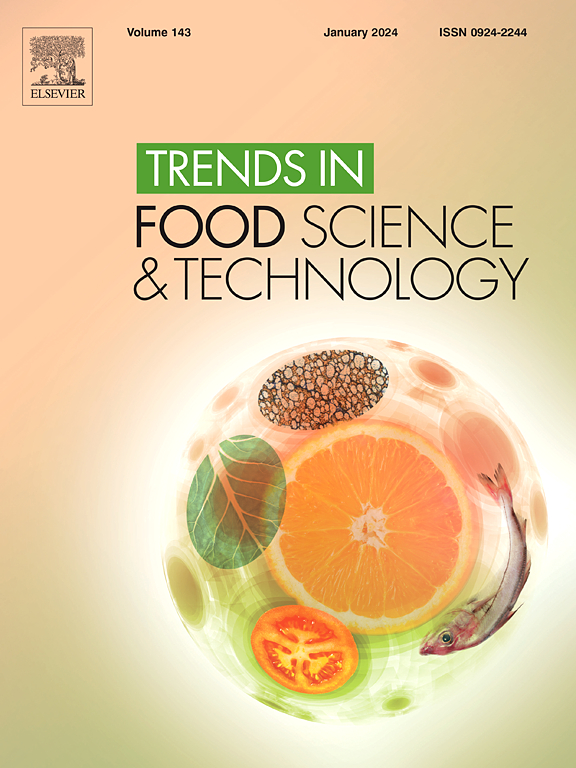改善咖啡替代品的风味、安全性和可持续性:挑战和未来的研究方向
IF 15.1
1区 农林科学
Q1 FOOD SCIENCE & TECHNOLOGY
引用次数: 0
摘要
消费者对咖啡的偏好受到价格、可持续性和健康因素的综合影响,从而形成购买决策。在此背景下,之前的研究主要集中在使用对环境影响最小的成分来促进可持续发展目标(SDGs)的食品替代品上。然而,由于气候变化导致的全球产量下降,对咖啡不断增长的需求未能得到满足。这种情况提倡开发咖啡替代品来取代传统咖啡。范围和方法本综述旨在确定CS发展中的关键挑战。此外,本文还提出了缓解计算机科学发展中存在问题的策略,并提出了今后提高计算机科学整体素质的研究方向。主要发现和结论cs在健康方面具有相当大的前景,包括个性化咖啡,以提高市场接受度。替代品面临着一些障碍,比如复制咖啡复杂的感官属性、安全问题和可持续性考虑。结果表明,利用人工智能(AI)和非热新兴技术,如大气冷等离子体(ACP)、超声(US)、脉冲电场(PEF)、高压处理(HPP)和脉冲光(PL),可以改善CS的风味、安全性和可持续性,从而探索未来的研究方向。本文章由计算机程序翻译,如有差异,请以英文原文为准。
Improving flavor, safety, and sustainability of coffee substitute: Challenges and future research directions
Background
Consumer preferences for coffee are influenced by a combination of price, sustainability, and health considerations in shaping purchasing decisions. In this context, previous research focused on food substitutes using ingredients with minimal environmental impact to promote the Sustainable Development Goals (SDGs). However, the rising demand for coffee was unmet due to a decline in global production, primarily driven by climate change. This condition advocated for developing coffee substitutes (CS) to supplant traditional coffee (TC).
Scope and approach
This review aimed to identify the key challenges in CS development. In addition, the strategies to mitigate the problems of CS development have been outlined along with future research directions to enhance the overall quality of CS.
Key findings and conclusion
CS holds considerable promise for health advantages, including personalized coffee, to enhance market acceptance. The substitutes faced several obstacles, such as the replication of intricate sensory attributes of coffee, safety issues, and sustainability considerations. The results showed that future research direction could be examined using artificial intelligence (AI) and non-thermal emerging technologies, such as atmospheric cold plasma (ACP), ultrasound (US), pulsed electric field (PEF), high pressure processing (HPP), and pulsed light (PL), to improve the flavor, safety, and sustainability of CS.
求助全文
通过发布文献求助,成功后即可免费获取论文全文。
去求助
来源期刊

Trends in Food Science & Technology
工程技术-食品科技
CiteScore
32.50
自引率
2.60%
发文量
322
审稿时长
37 days
期刊介绍:
Trends in Food Science & Technology is a prestigious international journal that specializes in peer-reviewed articles covering the latest advancements in technology, food science, and human nutrition. It serves as a bridge between specialized primary journals and general trade magazines, providing readable and scientifically rigorous reviews and commentaries on current research developments and their potential applications in the food industry.
Unlike traditional journals, Trends in Food Science & Technology does not publish original research papers. Instead, it focuses on critical and comprehensive reviews to offer valuable insights for professionals in the field. By bringing together cutting-edge research and industry applications, this journal plays a vital role in disseminating knowledge and facilitating advancements in the food science and technology sector.
 求助内容:
求助内容: 应助结果提醒方式:
应助结果提醒方式:


